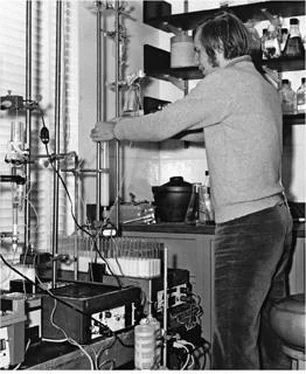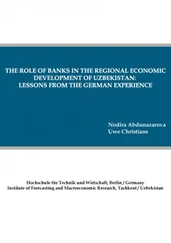James Watson - AVOID BORING PEOPLE - Lessons from a Life in Science
Здесь есть возможность читать онлайн «James Watson - AVOID BORING PEOPLE - Lessons from a Life in Science» весь текст электронной книги совершенно бесплатно (целиком полную версию без сокращений). В некоторых случаях можно слушать аудио, скачать через торрент в формате fb2 и присутствует краткое содержание. Жанр: Биографии и Мемуары. Описание произведения, (предисловие) а так же отзывы посетителей доступны на портале библиотеки ЛибКат.
- Название:AVOID BORING PEOPLE: Lessons from a Life in Science
- Автор:
- Жанр:
- Год:неизвестен
- ISBN:нет данных
- Рейтинг книги:5 / 5. Голосов: 1
-
Избранное:Добавить в избранное
- Отзывы:
-
Ваша оценка:
- 100
- 1
- 2
- 3
- 4
- 5
AVOID BORING PEOPLE: Lessons from a Life in Science: краткое содержание, описание и аннотация
Предлагаем к чтению аннотацию, описание, краткое содержание или предисловие (зависит от того, что написал сам автор книги «AVOID BORING PEOPLE: Lessons from a Life in Science»). Если вы не нашли необходимую информацию о книге — напишите в комментариях, мы постараемся отыскать её.
AVOID BORING PEOPLE: Lessons from a Life in Science — читать онлайн бесплатно полную книгу (весь текст) целиком
Ниже представлен текст книги, разбитый по страницам. Система сохранения места последней прочитанной страницы, позволяет с удобством читать онлайн бесплатно книгу «AVOID BORING PEOPLE: Lessons from a Life in Science», без необходимости каждый раз заново искать на чём Вы остановились. Поставьте закладку, и сможете в любой момент перейти на страницу, на которой закончили чтение.
Интервал:
Закладка:
7. Leave a research field before it bores you
When I decided to abandon the genetic approach of the phage group in favor of learning X-ray crystallography to go after the three-dimensional structure of DNA in Cambridge, I was in no way bored with the work of Max Delbrück and Salva Luria. My last phage experiments in Copenhagen were still very rewarding. By then, however, I was more and more drawn to finding the DNA structure, and meeting Wilkins gave me good reason to believe the phage group, for all its high purpose, was not the way. In science, as in other professions and in personal involvements, individuals too often wait for abject misery before effecting change that makes perfect sense. In fact, there is no good reason ever to be on the downward slope of experience. Avoid it and you'll still be enjoying life when you die.
6. MANNERS NEEDED FOR IMPORTANT SCIENCE
I ARRIVEDin Cambridge in the fall of 1951 sensing a majesty of place and intellectual style unmatched anywhere in the world. Its great university, reflecting almost nine hundred years of English history, first centered itself along the banks of the river Cam, whose modest waters move northeast across East Anglia to the market city of Ely. There its massive twelfth-century cathedral had long towered over the vast flat fenland marshes that emptied into the Cam forty miles from the shallow waters of the Wash, over which tidal waters from the North Sea still roar twice daily. It was the draining of the fens over many centuries that created the rich agricultural fields and wealth of the great East Anglia estate owners. Their benefactions in return helped create along the “backs” of the Cam the many elegant student residences, dining halls, and chapels that already many centuries ago marked out Cambridge as a market city of extraordinary grace and beauty.
For most of its history, Cambridge University was highly decentralized, with the teaching exclusively carried out by its residential colleges, among which Trinity was long the grandest, having enjoyed the matchless patronage of Henry Vili. In a room off the Great Court had lived the young Newton, whose greatest science was done in his twenties and thirties before he went up to London to be master of the mint.
Until the mid-eighteenth century, the primary role of the colleges was to educate clergy for the Church of England, the mission carried out by fellows (dons) who were themselves required to remain unmarried while part of college life. Only in the nineteenth century did scienee become an important part of the Cambridge teaching scene. Charles Darwin's serious excitement about natural history and geology came from his exposure in the early 1830s to these disciplines at Christ's College. Over the next half century, the responsibility for instruction increasingly shifted away from the colleges to newly created academic departments under university control. In 1871, the Duke of Devonshire, Henry Cavendish, donated funds for the creation of the Cavendish Laboratory and the appointment as the first Cavendish Professor of James Clerk Maxwell, whose eponymous equations first unified the dynamics of electricity and magnetism. Upon Maxwell's early death at age forty-nine in 1879, the twenty-nine-year-old John William Strutt (Lord Rayleigh), famed for his ideas on optics, became the second Cavendish Professor of Physics. In 1904, he was to win a Nobel Prize, as would the next four successors to the chair: J. J. Thomson (1906), Ernest Rutherford (1908), William Lawrence Bragg (1915), and Nevill Mott (1977).
By the start of the twentieth century, Cambridge stood out as one of the world's leading centers for science, of the same rank as the best German universities—Heidelberg, Göttingen, Berlin, and Munich. Over the next fifty years, Cambridge would remain in that rarefied league, but Germany's place would be supplanted by the United States, much strengthened by its absorption of many of the better Jewish scientists forced to flee Hitler. England similarly much benefited from the arrival of some extraordinary Jewish intellectuals. If Max Perutz had not had the good sense to leave Austria in 1936 as a young chemist, there would have then been no reason for my now moving along the Cam.
Though winning the great struggle against Hitler had drained England financially, the country's intellectuals took pleasure in knowing that their country's great victory was much of their own making. Without the physicists who provided radar for British aviators during the Battle of Britain, or the Enigma code breakers of Bletchley Park who successfully pinpointed the German U-boats assaulting the Allies’ Atlantic convoys, things might have turned out very differently.
Emboldened by the war to think boldly, the then tiny Medical Research Council (MRC) unit for the Study of Structure of Biological Systems was doing science in the early 1950s that most chemists and
biologists thought ahead of its time. Using X-ray crystallography to establish the 3-D structure of proteins was likely to be orders of magnitude more difficult than solving the structures of small molecules such as penicillin. Proteins were daunting objectives, not only because of their size and irregularity but because the sequence of the amino acids along their polypeptide chains was still unknown. This obstacle, however, was soon likely to be overcome. The biochemist Fred Sanger, working less than half a mile away from Max Perutz and John Kendrew at the MRC lab, was far along the path to establish the amino acid sequences of the two insulin polypeptides. Others following in his steps would soon be working out the amino acid sequences of many other proteins.Polypeptide chains within proteins were then thought to have a mixture of regularly folded helical and ribboned sections intermixed with irregularly arranged blocks of amino acids. Less than a year before, the nature of the putative helical folds was still not settled, with the Cambridge trio of Perutz, Kendrew, and Bragg hoping to find their way by building Tinkertoy-like, 3-D models of helically folded polypeptide chains. Unfortunately, they received a local chemist's bad advice about the conformation of the peptide bond and, in late 1950, published a paper soon shown to be incorrect. Within months they were upstaged by Caltech's Linus Pauling, then widely regarded as the world's best chemist. Through structural studies on dipeptides, Pauling inferred that peptide bonds have strictly planar configurations and, in April 1951, he revealed to much fanfare the stereochemically pleasing a-helix. Though Cambridge was momentarily stunned, Max Perutz quickly responded using a clever crystallographic insight to show that the chemically synthesized polypeptide, polybenzylgluta-mate, took up the a-helical conformation. Again the Cavendish group could view itself as a major player in protein crystallography.
The unit's resident theoretician was by then the physicist Francis Crick, who at thirty-five was two years younger than Max Perutz and one year older than John Kendrew. Francis was of middle-class, nonconformist, Midlands background, though his father's long-prosperous shoe factories in Northampton failed during the Great Depression of the 1930s. It was only with the help of a scholarship
from Northampton Grammar School that Francis moved to the Mill Hill School in North London, where his father and uncle had gone. There he liked science but never pulled out the grades required for Oxford or Cambridge. Instead he studied physics at University College London, afterward staying on for a Ph.D. financially sponsored by his uncle Arthur, who after Mill Hill had chosen to open an antacid-dispensing pharmacy instead of joining the family shoe business.Unlike Max and John, who came into science as chemists and now possessed Ph.D.'s, Francis's doctorate was not completed. He had done just two years of thesis research, winning a prize for his experimental apparatus to study the viscosity of water under high pressure and temperature, when the advent of the war moved him to the Admiralty. After joining the high-powered group set up to invent countermea-sures against German magnetic mines, his boss, the Cavendish-trained nuclear physicist Harrie Massey, gave him in 1943 the challenge of combating the German navy's latest innovation. In great secrecy, their shipyards had under construction a new class of minesweepers (Sperrbrechers) whose bows were fitted with huge five-hundred-ton electromagnets designed to trigger magnetic mines lying a safe distance ahead. Crick came up with the clever idea that a specially designed insensitive mine would not explode until the Sperrbrecher passed directly over it. By the end of the war, more than a hundred Sperrbrechers were so sent to the bottom of the ocean.
Читать дальшеИнтервал:
Закладка:
Похожие книги на «AVOID BORING PEOPLE: Lessons from a Life in Science»
Представляем Вашему вниманию похожие книги на «AVOID BORING PEOPLE: Lessons from a Life in Science» списком для выбора. Мы отобрали схожую по названию и смыслу литературу в надежде предоставить читателям больше вариантов отыскать новые, интересные, ещё непрочитанные произведения.
Обсуждение, отзывы о книге «AVOID BORING PEOPLE: Lessons from a Life in Science» и просто собственные мнения читателей. Оставьте ваши комментарии, напишите, что Вы думаете о произведении, его смысле или главных героях. Укажите что конкретно понравилось, а что нет, и почему Вы так считаете.












